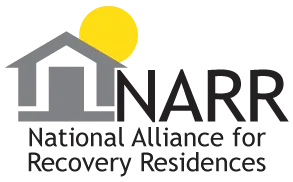Clients at Tranquil Shores have been known to have a love/hate relationship with the art of recovery process. As facilitator Julie Friedman tells it, especially if they have had any formal art classes in the past, many tend to intellectualize it at first.
“Often clients are so affected by their inner critic, they are paralyzed at first. In some cases I have the clients use their non-dominant hand so that they can’t make a mistake, all they can do at first is a doodle,” said Friedman. “Another way is to have clients close their eyes and make art so that their mind comes out of it and their imagination comes forward,” Julie says they even take the word art out of it calling it image-making, a visual language, tapping into the part of the brain that holds visual memory that doesn’t always have words. Each art of recovery session begins with a meditation; “because art is a physical process, you use your body to make art so if I want the clients to come from an intuitive place I have to get them into their body first so we do a mindfulness meditation that focuses on body sensation.”The art process in recovery can bring out a lot of emotion that is not able to be communicated verbally.
Friedman says she has seen clients who have done a whole piece of paper in black paint because that’s exactly how they feel inside. “I’ve had clients put very graphic, traumatic events on their paper with weapons, blood, you know, dead bodies and I give them permission to put it on the paper and then I give them permission to do whatever they want with the paper and I remind them it is just paper and just paint.” A process that creates a safe container to put emotions and get them out rather than holding them in. Often then the clients will kick the piece of paper against the wall, rip it into shreds or fold it up into a small package and keep in their pocket until they’re ready to look at it again. “When you bring it out you give it some freedom where you can observe it as a witness rather than experience it as something in your brain that you can’t access and so using art for trauma is really, really powerful.”
Friedman says she sees the clinical progress clients make from week to week as it shows up in their artwork almost as a guide to their healing. “So even though they may not have the cognitive memory of making a shift then, they’ve already made it intuitively.” Sometimes the artwork becomes a spiritual practice, for some, it can be the only way clients get in touch with their spirituality because, as Friedman puts it, “some of these are messages from beyond; the images that come from our imagination never come to harm us they only come to help us.” Tranquil Shores offers their clients 2 and ½ hours of the art of recovery each week as an integral part of the recovery process. It’s common to see many substantial breakthroughs in this process on the road to sobriety.







